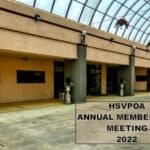By Former Board Secretary & Parliamentarian, Marcy G. Mermel, 10-21-20
Let’s First Look at our Authors
Peg and Fred Francis have lived in Victoria, Canada since 1950, which explains why the book is published by a Canadian firm, “New Society Publishers.” Fred was a Math teacher, and Peg, an elementary teacher and hobby painter. Aside from the Democratic Rules of Order (DRO), together they have designed valuable new products including a children’s building set called “Carpento,” an all-metal, rodent-proof composter called “Speedibin,“ and more than twenty different wood stoves and furnaces, some of which, at the time of being certified by the EPA, were the cleanest burning stoves ever tested in the lab. Manufacturers have sold thousands of these stoves, saving tons of smoke pollution in North America and overseas every year.
The Francis’s saw an urgent need for more justice and stronger democracies in our world:
“For a democracy to work successfully the populace itself must understand and want to obey the democratic principles. Citizens need practice in making the individual rights of each member and the rights of the majority work together.”
They intended that people using this book are practicing and learning these laws at the grass-roots level. Fred Francis passed in 2003 with Peg and their children carrying on the work of updating and publishing new editions…The work of revising and publishing new editions by remaining relatives is something that Robert’s Rules of Order Revised (RR) and DRO do have in common. DRO is in its 10th edition, while RR is coming out with number 12 sometime in the fall of 2020.
In the September 7th HSV Board discussion Session, Chairman Sherman remarked specifically about changing from the use of RR (which has been used for 50 years by HSV) to the DRO, which he said he was obviously in favor of: “The input I have gotten through both my personal email and the POA email is what I think is a misunderstanding of what Robert’s Rules of Order versus the Democratic Rules of Order are. This is Robert’s Rules of Order, simplified, in a nutshell. It really is.”
Sherman continued: “It’s modernized and clarified, and its use is getting to be more widespread, but we don’t really need to have a situation where a board member or a committee member needs to know that they have to ask for the question when they could say something simple, ‘can we just take a vote now?’ That’s what the informal process allows you to do. It also, and Joanie (JoAnne Corry] doesn’t have it with her today, but it also doesn’t require every person to know what’s in a manual that’s that thick [using his hand to intimate 4 inches or so) and understand all the nuances of Robert’s Rules.”
Sherman: “We’re here to conduct business. We should be able to do it in an orderly and yet a somewhat informal, but following Robert’s Rules of Order structure. Motions are still made the same way. It’s just that the formality, the objections that can be made, and that kind of thing, although you can do them, are not as…you don’t have to follow the finite rules that are in Robert’s Rules of Order.”
Before we look into the details of either the Democratic Rules of Order or Robert’s, let’s first address our Chairman’s statements:
- DRO is NOT:
- RR simplified;
- A version of RR;
- Structured following RR.
In the Preface of DRO, it reads: “Fred and Peg recognized the need for a concise, authoritative resource to assist boards of directors, committees, and other organized groups seeking to fairly represent their memberships by hosting efficient, effective meetings. Because they could not find such a resource, they created one.
The introduction of DRO reads under “Democratic Principles”: This is not an abridged version of other books. It is a complete set of rules determined by common practice the natural laws of democracy – “rule by the ruled,” as Webster’s dictionary puts it.
In a comparison of RR to DRO, Prospectbusiness.org answered the question, “Why was the Book [DRO] written?” this way: In hundreds of meetings, the authors saw the frequent frustrations caused by the complexities of the traditional rules…..They searched for a set of rules which were simpler but found none satisfactory. Nearly all were incomplete or modifications of the same complex procedures [RR]. Finally, they decided to write a complete set of rules based only on democratic principles and common practice.
This does not mean DRO is good or bad; it does mean that it is neither a version nor a derivative of Robert’s Rules, which was strongly misstated. Other directors mentioned how DRO was catching on and being used by organizations more and more. Yes, DRO is a best seller in Canada, but its use is really unknown in the States.
Let’s look at some interesting aspects of DRO taken directly from the “Introduction” and “Members Making Decisions” portions of the Booklet.
Introduction
Democratic Principles
The right of each individual member to participate equally and fully in orderly meetings that are free from intimidation, filibustering, and other disturbances and in which all members will follow the same easily understood rules, including the right to be equally and fully informed of all events, whether a member is present or not.
This makes an interesting point as this board had/has a tendency to segregate certain members depending on the meeting topic or does not make sure an absentee member gets all the information and facts of the meeting or call – now they must.
Degrees of Formality
In small or close-knit groups, decisions can often be made by consensus or general agreement, provided that the chair or secretary recording each decision is sure that most members agree (see pages 15, Informal Chair, and 37, Less Formality).
Large groups, too, often make decisions informally. The mover’s privilege (see page 19, Mover’s Privilege) allows cooperative members to work out decisions quickly and easily. A more formal amending process is automatically required if opinions are divided. The degree of formality is usually determined by custom, agreement, or a law as defined in the next paragraph.
This means a decision can be made without even voting. Also, someone can/must make the distinction between more or less “formality” …not quite sure how that will go over and who decides?
Higher Laws
Rules of order are automatically overruled when a law of the land, a constitution, a bylaw, or an existing standing rule applies. Throughout this book, we refer to any of these as a law. Rules of order apply to the conduct of meetings only. They do not interpret laws or make up for deficiencies in bylaws or standing
rules.
IMHO, any rules of order must support and uphold the governing documents, which is often half of what the agenda items are about. This seems to be a serious disconnect between an organization’s governing documents and how they govern.
For Maximum Efficiency
Sharing the decision-making process in meetings is like driving a car. There are rules to be learned and skills to be attained. Once this has been done, group decision-making is second nature, like driving. If each member reads this book thoughtfully at least once, and if the chair does the same at least twice, and if members agree to follow these rules, your meetings should move as easily as the car of an experienced driver who can drive competently without wondering which pedal to press.
I believe the Villagers are going to want some sort of assurance that the Directors are going to “read it once and the Chair twice” …. DRO is truly suggesting that every board member learns the rules and be skilled at using them. If this is voted on October 21, when does it go into effect? How long will it take for everyone to get “up to speed”, or, is everybody ready right now?
Members Making Decisions
Equal Rights
Unless a law states differently, each member has one vote and an equal voice in all decisions.
That means everyone, not just the directors that like each other.
The Chair
The president or someone elected by the members or appointed by the executive board to conduct the members’ meetings.
OK, sounds familiar, so far so good.
Chair’s Authority
The chair’s duty is to preserve order and fairness in meetings by following the bylaws and rules of order. Members must abide by the rulings of the chair without debate except when a point of order (see page 32, Point of Order) is made.
This sounds reasonable; however, the issue is when the bylaws and the rules of order clash (see “Higher Laws” above).
Formal Chair
In large meetings, the chair must be—and must be seen to be—absolutely impartial. The chair must refrain from expressing personal opinions in words or gestures and should not participate in discussion except to guide it in an orderly fashion. If, on rare occasions, the chair has relevant, brief information, the chair
may depart from this rule, but the chair must always avoid showing any bias. The chair cannot make a motion.
I believe this would have been impossible for the recent former chair, and will be equally difficult for our present one.
If the chair needs to participate actively in a discussion, arrangements should be made for another member to fill this position until the motion has been voted on. A member may call the chair to a point of order for wrongful participation, and the chair should comply with good spirit (see page 58, Q31).
This sounds like the situation could become quite unwieldy…who takes over when the chair wants to participate? How are the “arrangements” made mid-stream during a meeting?
Informal Chair
In smaller or less formal meetings, members may have a bylaw, standing rule, or custom permitting the chair to participate in discussions with the same privileges as other members.
“Less formal”, who makes the decision if a topic is less formal?
Addressing the Chair
Members must wait for permission (a verbal or nonverbal sign) from the chair before speaking. If several members stand at once, the chair selects one and notes who should be next. The others should sit until the speaker has finished; in large assemblies, the chair may require members wishing to speak to line up
behind a microphone, or put their names on a list and wait their turn. A list of the order of speakers, preferably visible to all, is often useful, especially for virtual meetings.
IMHO, I do not see this happening at HSV Board meetings. This seems MORE formal, not less formal or informal.
Agenda
The items of business and the order in which they are to be discussed at meetings, generally prepared
by the secretary with executive board approval, or, in smaller meetings, by the chair. The agenda should be made known to members beforehand. An agenda distributed in advance is particularly valuable for virtual meetings. The agenda can be changed by the members any time during the meeting except when another motion is on the floor (being considered by the members). The agenda change must be voted on if one or more members object. Agenda headings might include:
• Opening of the meeting and approval of the agenda
• Minutes of the previous meeting
• Correspondence and reports
• Business arising from minutes, correspondence, and reports
• Motions to be presented and new business
• Announcements
• Adjournment and closing
The agenda can be changed any time during a meeting except when a motion is on the floor – again, this could escalate into another unwieldy situation.
Motions and Decisions
Sometimes decisions are made by consensus in which the chair says “If there are no objections, then [the decision is described],” but otherwise all decisions are made with motions or resolutions (see page 55, Q26) in which a member says “I move [that some action be taken].”
So, decisions can be made without a vote. This sounds very, very dangerous.
Opinion Poll (Straw Vote)
A nonbinding opinion poll (straw vote) can be held by the chair any time during a meeting if the members are willing. If a member objects, the chair should ask the members for a decision and conduct the opinion poll or not according to the members’ vote (see page 55, Q27).
OK, so you can ask for a vote that really isn’t a vote…also sounds dangerous.
Mover’s Privilege
During discussion, ideas for improving the motion may occur. Provided that not more than one member objects, the mover may reword or withdraw the motion any time before it has been voted on. A seconder for new wording or withdrawal is required. Rewording can be continued until the motion is as perfect as the mover, assisted by the meeting, can make it.
Once the mover has decided on new wording—and it has been seconded—the chair or secretary should read out the reworded motion, which immediately becomes a new motion on the floor, replacing the previous one. If two members object prior to this reading out of the reworded motion, changes can be made only with motions to amend.
All we can do is pray everyone can keep up!
Amendments
If the mover does not—or cannot, because of objections—make a suggested change to the motion, any member may move an amendment to the original motion. An amendment may delete, substitute, or add words that will modify the original motion but must not negate it or change the intent. The amendment, when accepted by the chair and seconded, immediately becomes a new motion on the floor, temporarily replacing the original motion. The amendment grants mover’s privilege to the mover of the amendment. Any rewording must be acceptable to the chair as not changing the topic. The details of the proposed amendment are discussed (not the original motion), and then the amendment is voted on.
An amendment cannot be amended, but it can be defeated and replaced with another amendment. If the amendment passes, the secretary should read the newly amended motion, which is now a new motion on the floor to be discussed (if desired) and voted on. It cannot be reworded or withdrawn by the mover’s privilege now, since it has been partly established by the members, but this new motion can be passed, defeated, or amended again.
If the amendment fails, the previous motion again becomes the motion on the floor. If this previous motion was the original motion (having never been amended), then the original mover regains the mover’s privilege. Further amendments are allowed, one at a time.
Even I will be reading this one several more times to understand it completely.
Voting
When all members who wish to speak have done so, the chair should call for a vote. Unless a larger majority is required (see page 25, Larger Majority Vote), a decision is made (the motion is passed) when a quorum is present and more than half the votes are affirmative. Spoiled ballots and members not voting are not counted (see page 51, Q18).
Sounds familiar – a little relieved.
Calling for a Vote
Members who believe discussion is complete sometimes call out “We are ready to vote,” or the chair might ask “Are you ready to vote?” The response is a guide for the chair only and does not force a vote. A member who believes that the chair is calling for the vote too early or is delaying too long can rise on a point of order (see page 32, Point of Order) and move that “we delay the vote for more discussion” or that “we vote now.” Such a motion needs seconding and should be voted on with little or no discussion.
This sounds viable and fair – one would hope it will be practiced by all.
This covers only a few pages of the Booklet. I will leave reading the remainder up to the board and any Villagers that wish to understand the new procedures, should this be voted through.
Author’s note: Had I been asked to research the subject of a possible replacement for Robert’s Rules of Order when I was Parliamentarian, or even while out of state, I would have certainly obliged.
I would have, however, first explained that Robert’s Rules accommodates smaller boards and less formal activity, and that we should be looking into those options before completely jumping ship.
For example, here is a RR “Tool Kit” for smaller boards which appears quite simplified and handy:
Roberts-Rules-of-Order-Cheat-Sheet-tool-kit* * *
Here is one that explains specifically the paired down rules for smaller boards:
Roberts-Special-Rules-for-Small-Boards* * *
This explains the need for parliamentary procedures, the ten basic rules that are common among all rules, and then adds a section of Special rules for small nonprofits:
Roberts-Rules-of-Order-Parliamentary-Procedure* * *
I am hoping that this information will at least allow the board to defer the Democratic Rule of Order vote until these other options are evaluated. As always, I am willing to provide more information, insight, and conversation so that the board feels completely comfortable with such a weighty decision.
Respectfully,
Marcy G. Mermel. CCIM, CAC
* * *
Thank you for reading. Be sure to bookmark this website. Click here to visit the Hot Springs Village People Facebook Group. Click here to visit Hot Springs Village Community forums.











Vicki Husted
10/21/2020 — 3:45 pm
Thank you, Marcy, for your exhaustive analysis of this subject. I, personally, hope that it is not passed. I am very concerned about recent changes that I believe have hampered the transparency I was looking for when I voted for the original members of this board, and believe that this change will only muddy the waters further if it is adopted. Much like nationally, our Declaration of Independence has served us well and endured for nearly 250 years, there are reasons that RRO has endured for so long. A departure from RRO at this point in time deserves more than a cursory evaluation by our BOD and the Villagers.
MARCY GAIL MERMEL
10/21/2020 — 7:08 pm
Thank you Vicki, and I agree with you. RR required reporting of meetings, topics, and other items that you will find all throughout our bylaws.
I am very, very concerned with the degree of transparency decreasing rapidly.
I, too, believed in what was being promised before and during the campaign, to me personally as well as to the Villagers. If I had even an inkling of how the “New Majority” was going to act: the blame, the drama, the musical chairs…Although I did not understand it at the time, I guess I should be glad they started to segregate the Corporate Treasurer and Secretary from meetings and calls early on…at least we cannot be considered “guilty by association”.
Lloyd Sherman
10/21/2020 — 9:45 pm
Try running a meeting utilizing ALL the requirements of Roberts Rules and just maybe you would perceive the change THAT WAS MADE differently. For instance, today several issues came up that the board wanted additional input on before they voted. Why do you need a second before you can actually take an item to vote? Roberts Rules require the same old tired process. The new process allows a more informal where discussion can take place before it requires a second. You will still see a motion, a discussion, and a vote. The rigid requirements of Roberts Rules say you conduct this process less formally. How is that bad for the process? From a property owner’s standpoint, I don’t believe you will see an ounce of a difference except it will be less formal. And just because something has been done the same way for 50 years doesn’t mean it was right or wrong. Like I said, come conduct these meetings and then determine what you think the best process is.
Keith
10/22/2020 — 12:09 am
Lloyd appears to be cracking under the pressure of running North America’s largest gated community. Why are we allowing our board Chairs to speak to us like children? Why is this board having difficulty with SOPs that are easily followed by most non profit boards and city councils? Where do we sign the incorporation papers?
Keith
10/22/2020 — 8:31 am
Lloyd, while we have you here, what plans are you and this board hiding with your push to recover old NRPI properties and pay Rose to work on that directly with the GM? How much is that costing us? The board killed the CMP, you repeatedly said you were against its components and spending one dime on its implementation, yet you are implementing small pieces at a time and thinking no one notices. Apparently we cannot trust anything you claimed to have stood for when you campaigned.
Tom Blakeman
10/22/2020 — 9:22 am
Lloyd. Don’t bother to respond to someone who won’t publish who they really are.
Keith
10/22/2020 — 10:08 am
Tom, you should be outraged that the CMP is being implemented right under your nose. Or, maybe you are in on what Lloyd has going on behind closed doors. Enlighten us with your wisdom or let Lloyd answer for himself. That is after all what we elected him to do.
Elmo Wiggins
10/24/2020 — 7:35 am
Gee Keith … do you think they are going to build a “Town Center” there?
Samuel
10/24/2020 — 9:49 am
Are the plans are to develop a lodge? King’s main expertise is in restaurants and hotels.
Lorri Street
10/24/2020 — 5:08 pm
Dear lloyd…Internet Communication Etiquette 101 is much simpler than RRO so I’m hoping you might be able to grasp this: When a person uses multiple words CAPITALIZED in their written communication with others (I have two such recent commuiques you sent me personally) the reader can only interpret the CAPITALIZED words as shouting. This defInition I did NOT make up. Are you becoming unhinged so soon after taking on the Board Chair position? I certainly hope not… however, at the very least it demonstrates your lack of professionalism. We Villagers expect more from our elected Board Members.
Elmo Wiggins
10/25/2020 — 8:41 am
Lorri – please share with us the communications you sent to Lloyd … it may be that WHAT you said necessitated a response with CAPITALIZED letters. In some cases, bolding and underlining are not available and capitalization is the only way to accentuate words. We cannot know the case/facts until we hear/see BOTH sides of the communications!
Lorri Street
10/26/2020 — 4:12 pm
Coming soon Elmo 🙂
Lorri Street
10/26/2020 — 3:50 pm
And here you go….I contacted Lloyd Sherman by phone to ask him if the slides that were shown during the F&P meeting on Oct. 13, 2020, could be made available in a hardcopy. I let him know that the slides had been inserted into the HSV Official YouTube recording of the meeting, however, viewers could not pause them in order to fully read as the slides moved to swiftly to comprehend. Lloyd texted me later in the day that I’d phoned him. He wrote, “I am told by Paul Moore that he w ill look into it and get back to me. They were to have inserted links and he fears the IT staff didn’t know how.”
I then texted back, “Thank u for the follow up as discouraging as it seems. With that said perhaps a backup could be that Property Owners can visit the POA and receive hard copies?”, “IMHO…for the budget to move forward without the opportunity of Property Owners having a more reliable manner of reading the (proposed) budget details is a throwback to yester-years. I know that the current BOD’s does not want that perception to cultivate.”
The following morning I sent the following email to Mr. King and cc’d Lloyd and Tucker Omohundro.
From: Lorri
Sent: Thursday, October 15, 2020 7:38 AM
To: Charles King
Cc: Lloyd Sherman; Tucker Omohundro
Subject: Slides from F&P meeting on October 13th, 2020
Good morning Mr. King,
My name is Lorri Street and I live here in the Village. I have been following the F&P meetings and I’m most interested in being able to review the drop-in slides included in the various department budget presentations. The drop-ins have been imbedded in the Official HVS You Tube video(s), however they cannot be paused and move very quickly to the following slide(s). I would much appreciate obtaining a hardcopy of the slides so I may review them with ease. I will be happy to stop by the POA office sometime today to pick up the copies if you would direct me to whom I should ask for once I arrive.
Thank you much!
Lorri Street
Sent from Mail for Windows 10
Lloyd quickly responded via email the following:
From: “outlook_AA90AD3C4BFD0026@outlook.com”
Date: 10/15/20 8:13 AM (GMT-06:00)
To: Lorri , Charles King
Cc: Tucker Omohundro , Hot Springs Village Property Owners Association
Subject: RE: Slides from F&P meeting on October 13th, 2020
Lorri,
I told you last night that I would handle this! I have spoken to Paul Moore who overheard my conversation regarding this matter at the meeting the other day and my request. Mr. King does not need to be bothered with items that I already told you I would handle.
Per standard records review policy, should you want to review copies before this issue is resolved, please contact Ella Scotty per the procedure. She will be glad to provide you guidance if necessary.
Lloyd Sherman
POA Board Chair
lsherman@hsvpoa.org
“Complaining about a problem without posing a solution is called Whining”
Quote By: Theodore Roosevelt
My reply to Lloyd:
From: streetbiken
Sent: Thursday, October 15, 2020 8:56 AM
To: outlook_AA90AD3C4BFD0026@outlook.com; Charles King
Cc: Tucker Omohundro; Hot Springs Village Property Owners Association
Subject: RE: Slides from F&P meeting on October 13th, 2020
Dear Llyod…to be sure I do not appreciate your ‘scolding’ tone towards me. As a HSV Property Owner I have the right to directly communicate with BOD’s and GM. I did this frequently with our past ceo and never once did she or any member of the BOD’s reply to me in a disrespectful manner. I expect and anticipate the same from you.
I will contact Ella this morning and request hard copies of the slides. I now realize that reaching out to you directly was/is a mistake…one that I won’t make in the future.
Respectfully,
Lorri Street
Lloyd’s email reply back to me:
——– Original message ——–
From: “outlook_AA90AD3C4BFD0026@outlook.com”
Date: 10/15/20 9:07 AM (GMT-06:00)
To: streetbiken , Charles King
Cc: Tucker Omohundro , Hot Springs Village Property Owners Association
Subject: RE: Slides from F&P meeting on October 13th, 2020
And one I took the time to respond to your concern last night via text and immediately got on the issue. Maybe your traditional manner of going around people to get what you want would be something you might want to evaluate going forward. When I tell someone I am taking care of something, I don’t need an immediate end-run to get what they want within their timeframe. Budget is not up for formal approval until the November meeting so you have plenty of time to review the numbers. We apologize that the rollout was not as expected but we are dealing with times none of us have experienced before and we have to learn to adjust on the fly.
As for my tone; you bet it irritated me. It’s not the first time it has happened concerning you nor do I expect it to be the last.
Lloyd Sherman
POA Board Chair
lsherman@hsvpoa.org
“Complaining about a problem without posing a solution is called Whining”
Quote By: Theodore Roosevelt
I’m looking for the final reply I made to Lloyd..will add soon.
Elmo Wiggins
10/26/2020 — 6:59 pm
Lorri – without the benefit of hearing your initial phone conversation with Lloyd, in my opinion Lloyd’s responses were somewhat terse and inappropriate. He probably regrets them.
Lloyd and the remainder of the board are under a great deal of pressure. The job is much more complex than anticipated plus an endless time-consuming responsibility. There are many problems to solve.
However, I agree he needs to be more respectful!